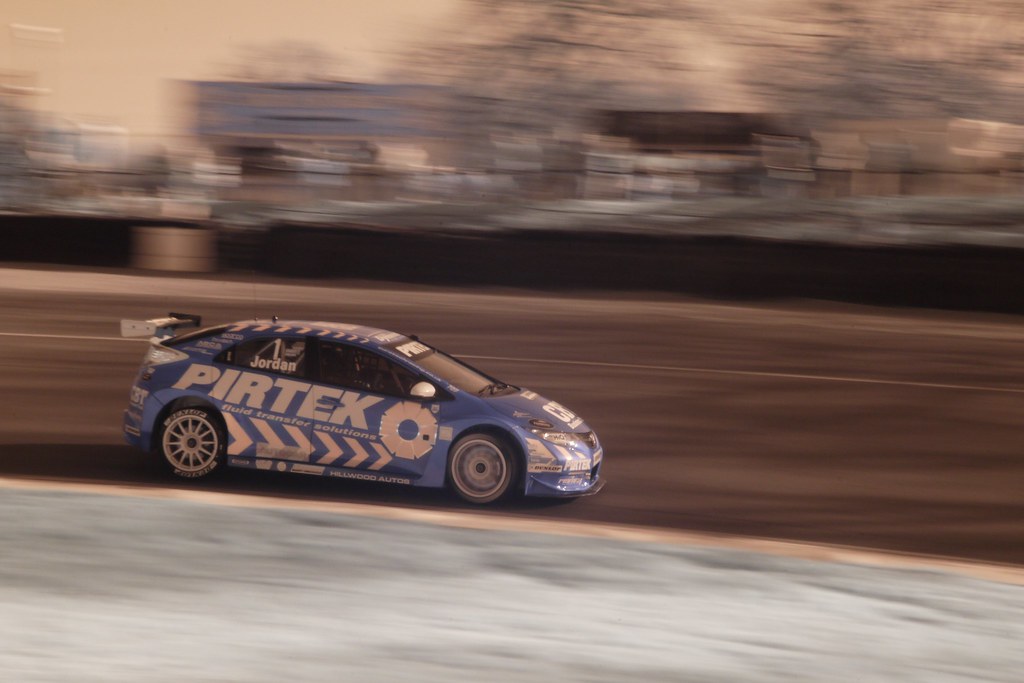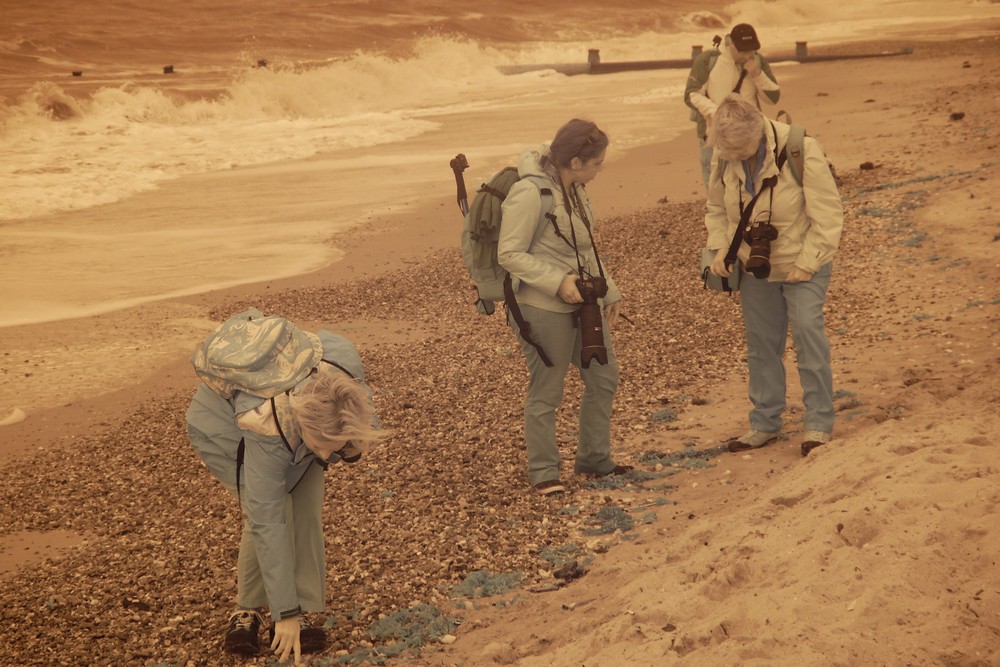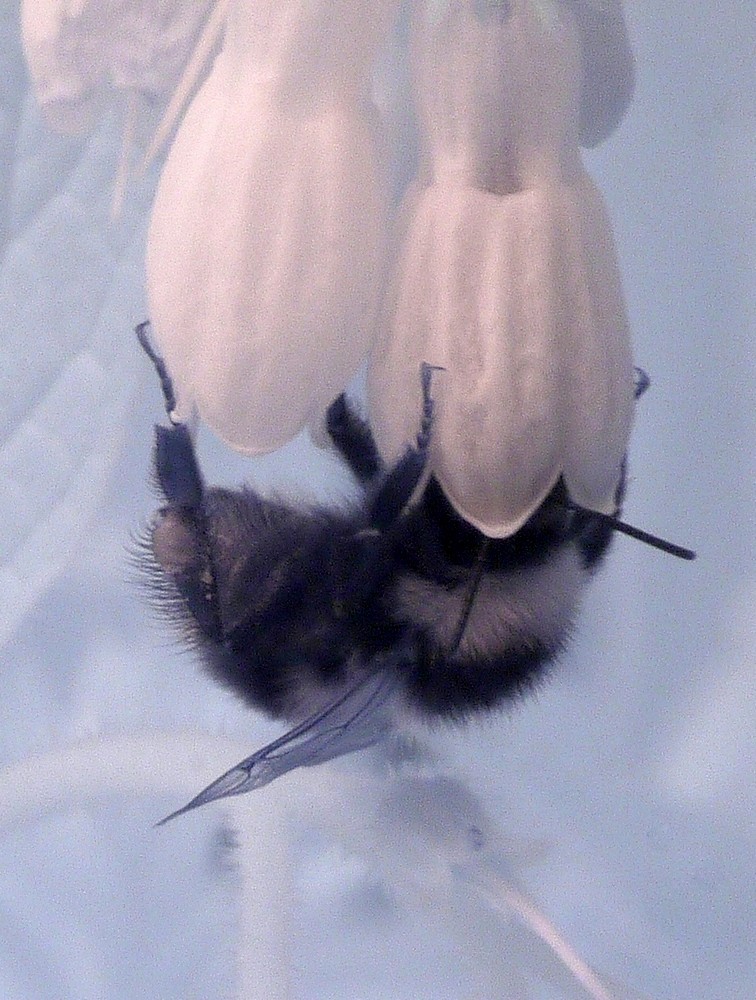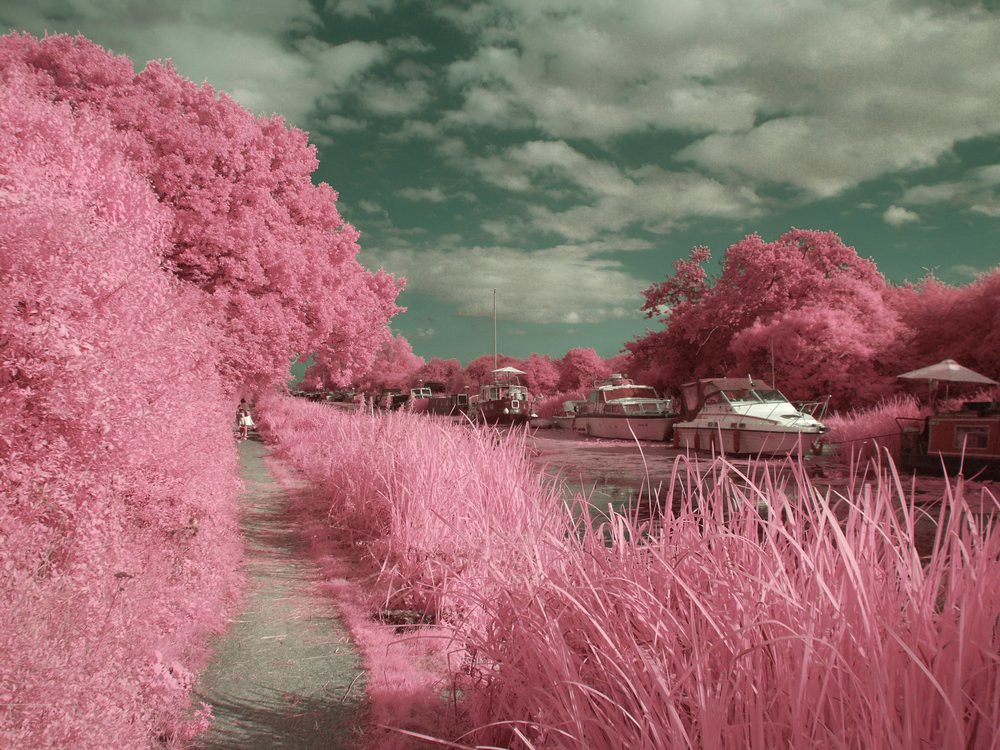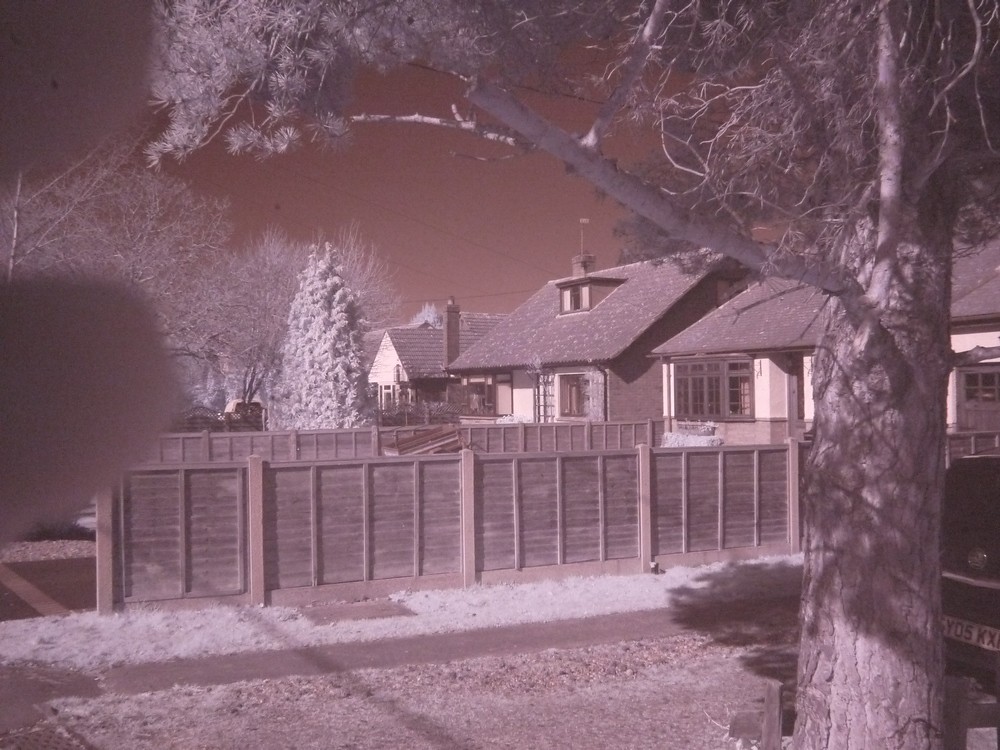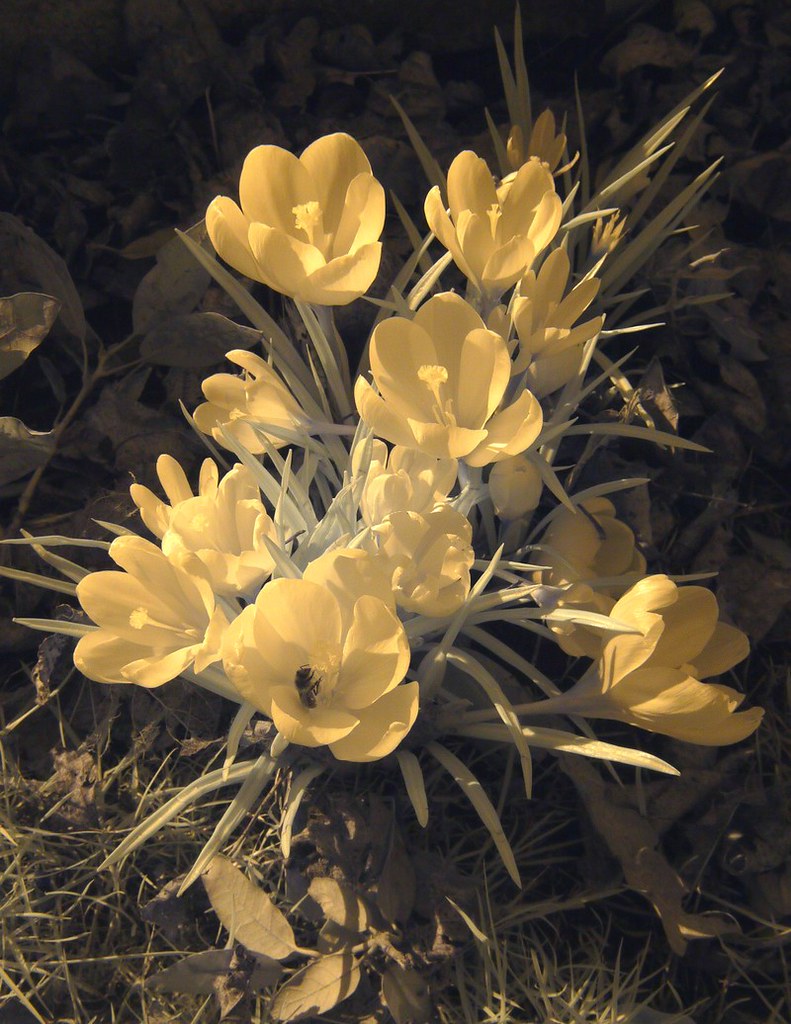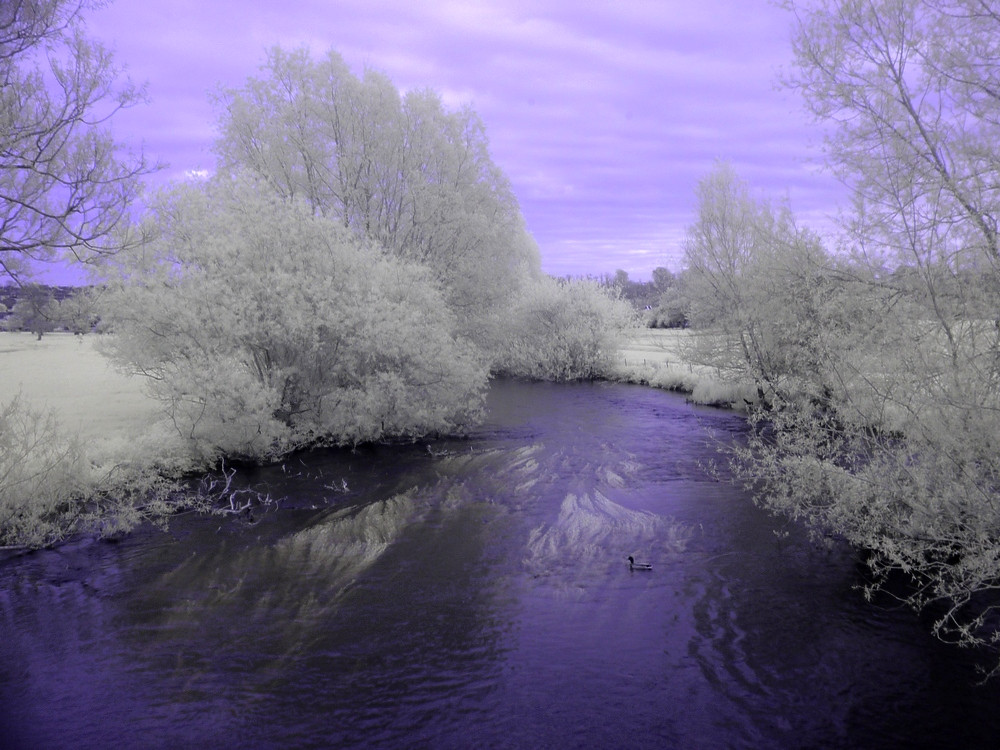Trying to repost transmission data I determined years ago (from another IR forum): sadly the BBcode for tables doesn't work here (yet). It's nearly unreadable without this but comma separated variable might work for some of you (it can be imported to most spreadsheet packages):
I've built up a collection of spectra for quite a range of filters & may as well share the data here.
To Begin with IR filters, normal Photography (& astronomy) filters, related technical glasses & IR blocking filters.
All IR filters I tested other than the 850nm were from Rocolax (Cheap).
Where I have several sizes these were measured separately & are show to give an idea of batch/test variation.
A yes entry in Web data means I've not checked it myself just found the data on the web, otherwise they are my measurements of filters I have available.
? means that value not measured.
Filter, web-data, 300nm, 350nm, 400nm, 500nm, 600nm, 700nm, 750nm, 800nm, 900nm, 1000nm, 1100nm, notes
650nm IR filter, no, 0, 0, 0, 0, 0, 91%, 91%, 91%, 91%, 91%, 91%, sharp transition 50% @~650nm
Another 650nm, no, 0, 0, 0, 0, 0.7%, 91%, 91%, 91%, 91%, 91%, ?, 10% @ 638nm
680mn IR filter, no, 0, 0, 0, 0, 0.01%, 85%, 88%, 89%, 90%, 90%, ?, 10% @~665nm
Another 680nm, no, 0, 0, 0, 0, 0, 84%, 87%, 88%, 89%, 89%, 89%, sharp transition 50% @~675nm, 69% @ 680nm
720nm IR filter, no, 0, 0, 0, 0, 0.04%, 53%, 89%, 89%, 89%, 89%, ?, 10% @ 680nm
850nm IR filter, no, 0, 0, 0, 0, 0, 0.1%, 0.5%, 9%, 90%, 90%, ?, Different supplier
950nm IR filter, no, 0, 0, 0, 0, 0, 0, 0, 0.4%, 20%, 58%, 76%, slow transition '~40%@950nm'
Another 950nm, no, 0, 0, 0, 0, 0, 0, 0, 0.2%, 14%, 51%, 71%, 33% at 950nm
SuperBlue (Public Labs), YES, 90%, 98.5%, 95%, 5%, 0%, 30%, 98.5%, 99%, 98.7%, 94%, ?, Values from 'Public Labs website. (max transmission very high)
SuperBlue (Life Pixel), YES, 83%, 91%, 88%, 3%, 0%, 25%, 91%, 91%, 91%, ?, ?, more believable values from Life pixels website
Hoya Yellow K2, no, 0, 0, 0.1%, 87%, 97%, 96%, 96%, 96%, 95%, 94%, 94%, Effectively ~485nm IR
Hoya Orange O(G), no, 0, 0, 0, 0.02%, 97%, 96%, 96%, 95%, 94%, 94%, 94%, ~530nm IR Sharp 20% @ 530, 50% @537
Orange 23A filter, no, 0, ?, 0.15%, 0.03%, 92%, 92%, 92%, 92%, 92%, 92%, ?
Red 25A filter, no, 0, ?, 0, 0.01%, 0.4%, 92%, 92%, 92%, 92%, 92%, ?
Hoya 85B 'Warming' filter, no, 0, 0.6%, 4%, 34%, 77%, 77%, 68%, 69%, 87%, 92%, 92%, slow transition with peaks 50% @ 541, 20% @ 435
Hoya Green X1 filter, no, 0, 0, 0.9%, 43%, 18%, 3%, 5%, 5%, 8%, 14%, 23%, Max 60% @533nm 20% @ 471 & 595nm
Cokin Blue A020 (+2 80A), no, 0, 0.7%, 34%, 43%, 13%, 89%, 92%, 92%, 91%, 92%, 92%, 50% @ 665nm 20% @ 375, 550, & 635nm
Cokin Polarising, no, 0, 23%, 34%, 37%, 40%, 44%, 50%, 56%, 73%, 77%, 77%, 20% @ 342nm, many bumps v limited polarization in IR
Hoya Skylight 1A, no, 0, 0, 80%, 84%, 91%, 93%, 92%, 92%, 93%, 93%, 93%, 1% @ 352nm
Didyminium filter 'Red Enhanser', no, 0, 0-95%, 60-95%, 60-95%, 10-96%, ~95%, 35-96%, 20-96%, ~90%, ~90%, ?, Reduces Sodium light Multiple sharp bands
Green 58 filter, no, 0.01%, ?, 0.03%, 35%, 8%, 0.5%, 0.5%, 0.5%, 1%, 2%, ?,
Blue 82A filter, no, ?, ?, 91%, 76%, 33%, 40%, ?, 38%, 42%, 50%, ?,
Light Green No 11 Filter, no, 0, ?, 0.1%, 70%, 72%, 65%, ?, 86%, 87%, 88%, ?,
Schott RG9, no, 0, 0, 0, 0, 0, 0, 82%, 88%, 80%, 59%, ?, Transmits ~720+nm
Schott RG695, no, 0, 0, 0, 0, 0, 66%, 98%, 98%, 97%, 97%, ?, Transmits ~695+nm
Schott OG590, no, 0, 0, 0, 0, 80%, 98%, 97%, 96%, 95%, 94%, ?, Transmits ~590+nm
Schott OG550, no, 0, 0, 0, 0, 91%, 91%, 91%, 91%, 91%, 91%, ?, Transmits ~550+nm V sharp
Schott BG3, no, 77%, 90%, 83%, 0.14%, 0.01%, 11%, 87%, 90%, 88%, 77%, ?, Similar to Super blue
Schott GG495, no, 0, 0, 0, 73%, 99%, 98%, 97%, 96%, 94%, 94%, ?, Transmits ~495+nm
Schott BG12, no, 0.02%, 58%, 80%, 15%, 1%, 8%, 10%, 9%, 11%, 17%, ?, Transmits ~330-500nm
Schott BG24a, YES, 90%, 91%, 89%, 24%, 6%, 85%, 89%, 87%, 83%, 80%, ?,
Schott BG39, no, ?, 59%, 79%, 88%, 52%, 1%, 0.03%, 0, ?, 0, ?, Transmits mainly 350-600nm
Schott BG40, YES, 0, 76%, 88%, 91%, 71%, 10%, 2%, 0.4%, 0.2%, 0.9%, ?, Transmits 320+ with minimal IR
Schott IRC-09, no, 0, 0, 88%, 94%, 93%, 0.7%, 0.2%, 0.3%, 0.3%, 0.5%, ?, Transmits ~390-650nm Hot mirror option
Schott BG18, no, 0, 40%, 70%, 91%, 50%, 1%, 0.1%, 0.01%, 0, 0.01%, ?, Transmits ~330-700nm Hot mirror option
Schott BG38, no, 0, 81%, 88%, 90%, 75%, 22%, 9%, 4%, 2%, 3%, ?, Hot mirror option
Baader UV/IR cut, YES, 0, 0, ~97%, ~97%, ~97%, ~97%, 0, 0, 0, 0, 0, V steep cut off & square profile ~50% @420&680nm ~1% @400& 700 (MAY vary with angle?)
Neewer UV/IR cut held flat as possible, no, 0, 0, 88%, 88%, 94%, 2.4%, 1%, 0.1%, 0.03%, 0, 0, Steep cut transmission varies with angle
Neewer UV/IR as above tilted ~30°, no, 0, 0, 84%, 93%, 93%, 1%, 0.2%, 0%, 0.03%, 0.2%, 6.6%, This shows transmission varies with angle
Sigma SD14 Internal Cut Filter, no, 0, 0, 0, 91%, 93.5%, 0.25%, 0, 0, 0, 0, 0.1%, The camera's easily removable hot mirror/dust protector
Copper sulphate solution (5mm at 50% saturation), YES, >50%, >75%, >80%, >80%, >50%, <0.1%, <0.1%, <0.1%, <0.1%, <0.1%, <0.1%, UV Pass IR block Actual transmission depends on pathlength & conc.
UG11, YES, 87%, 90%, 1%, 0, 0, 20%, 10%, 3%, 1%, 3%, UV pass with IR leakage
U330, no, 88%, 88%, 20%, 0.1%, 0, 45%, 43%, 28%, 26%, 33% , >10% throughout 240-404nm >70% throughout 260-290nm UV pass with IR leakage
U340, no, 73%, 78%, 0.2%, 0, 0, 1.4%, 0.5%, 0.02%, 0, 0, >10% throughout 70-380nm >70% throughout 300-355nm UV pass with IR leakage
U360, YES, 0.3%, 35%, 0.2%, 0, 0, 0.2%, 10%, 1.5%, 2%, 2%, >10% throughout 307-394 max 68% @363nm UV pass with IR leakage
Variable ND at darkest, no, 0, 0, 0, 0, 0, 0, 1.5%, 20%, 73%, 79%, 79%, 1% @730nm & 50% @ 843nm close to 860nm filter
Variable ND at palest, no, 0, 0, 12%, 43%, 47%, 48%, 50%, 57%, 76%, 79%, 79% , 1% @ 393nm about half stop more IR than visual
Variable IR darkest, no, 0, 0, 0, 0, 0.05%, 0.2%, 0.5%, 16%, 68%, 75%, 75%, 1% @ 759nm & 50% @ 856mn again close to 860nm
Variable IR palest, no, 0, 0, 0.3%, 0.04%, 16%, 46%, 48%, 48%, 71%, 75%, 76%, 1% @ 562nm & 50% @ 816mn red with relative enhanced IR
Variable IR intermediate setting, no, 0, 0, 0, 0.01%, 6%, 16%, 18%, 22%, 70%, 75%, 76%, 1% @ 575nm, 50% @ 851mn gives a stepped spectra unlike other filters
Variable control on these basically effects brightness of visual portion
Shade 8 welding glass (~10 stop), no, <0.03%, <0.03%, <0.03%, <0.03%, <0.05%, <0.03%, <0.03%, <0.02%, <0.02%, max 0.1% ~ 560nm
'Minus Green' Gel, no, 0, 60%, 68%, 52%, 70%, 90%, 90%, 90%, 90%, 90%, Transmission starts ~330nm reduces colour cast of welding glass
Floppy Disc material, non 0.003%, 0, 0, 0, 0.09%, 0.9%, 1.6%, 2.1%, 2.6%, 2.9%, 3%, poor transmission but works as IR filter
Unexposed but developed colour negative, no, 0.02%, 0.004%, 0.3%, 0.5%, 2.2%, 0.1%, 0.9%, 24%, 77%, 82%, 83%, Remarkably good DIY IR! 50% ~828nm
Exposed & developed colour negative, no, 0.04%, 0.16%, 3.3%, 18%, 46%, 42%, 53%, 74%, 85%, 87%, 88%, 50% ~740nm
The exposed negative might work as a high colour IR filter by itself, and could potentially be used with unexposed negative for a DIY an IR graduated filter
Note the IR portion of many normal blue & green has been found to vary widely. I now have three X1 filters, one with practically no IR transmission, one with lots of IR & a third that is intermediate.
Red orange & yellow filters are typically long pass types with good IR transmission.




